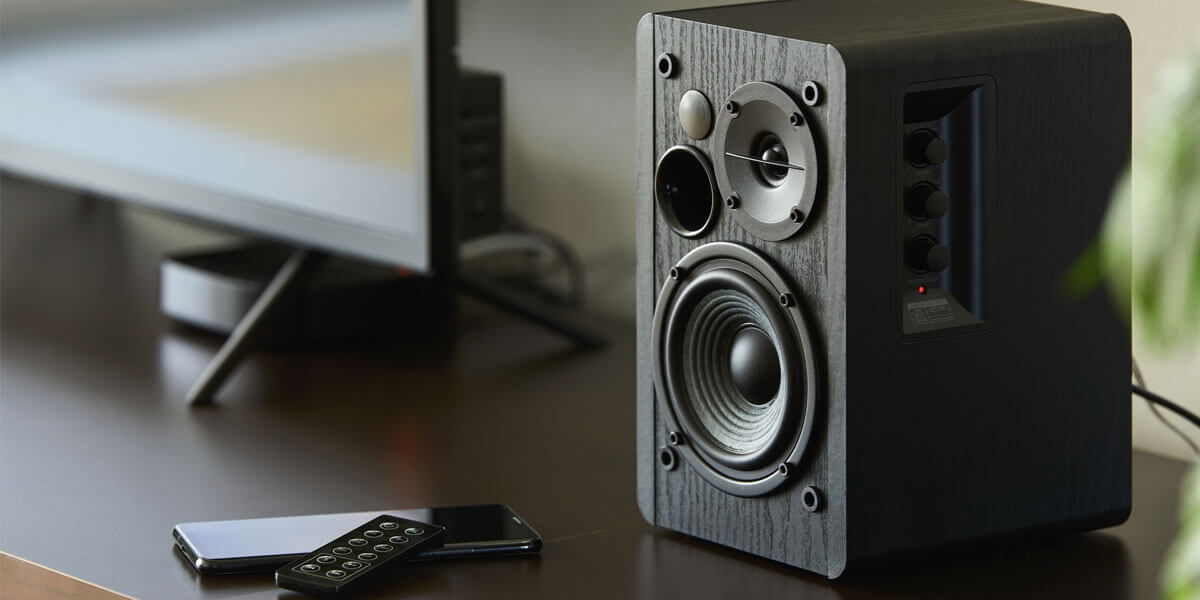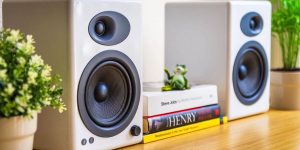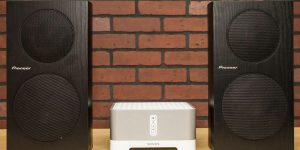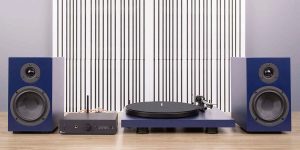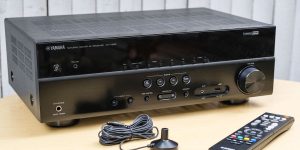Speaker frequency response is one of the most fundamental characteristics of your audio equipment, or simply put, your speakers. This parameter defines the range of audio waves your speakers can play, so it’s one of the most important specs to pay attention to when choosing your audio equipment.
I dedicated this article to all the ins and outs while orienting with frequency response in your choice of speakers, so read it attentively to select your speakers confidently and with no room for a mistake.
What is frequency response?
First, let me explain the general meaning of this spec: what it is and what it means for your audio system.
Definition and explanation of frequency response
Frequency response refers to the behavior of a system or device in response to different frequencies of an input signal. It describes how the system or device attenuates or amplifies the input signal at various frequencies. In other words, the frequency response tells us how well a system or device can handle different frequencies.
How frequency response relates to sound reproduction
Frequency response plays an important role in sound reproduction, and a good frequency response means that speakers reproduce different frequencies of audio signals accurately.
Importance of frequency response in speakers
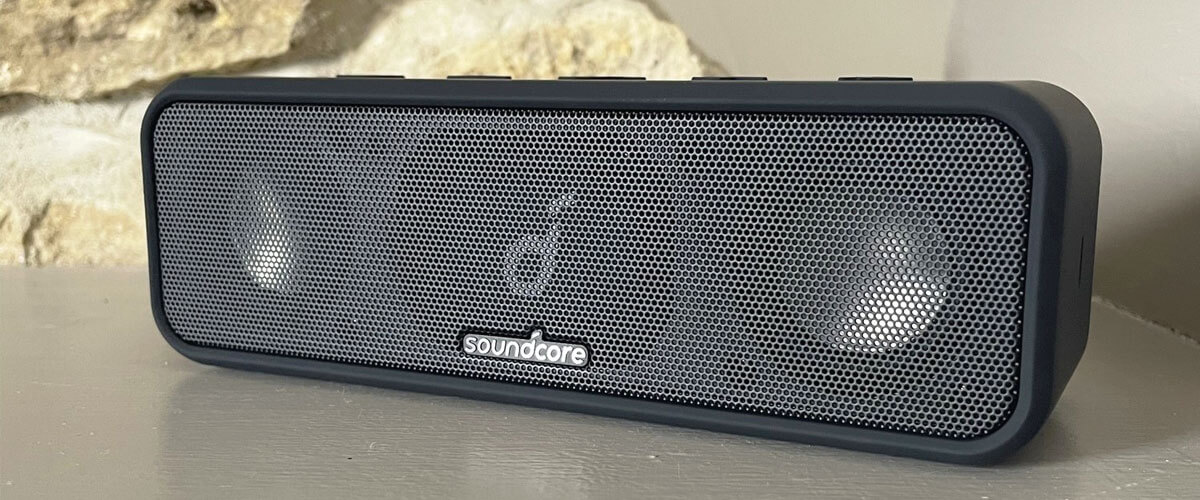
Without any doubt, the frequency response spec is of extreme importance in speakers’ characteristics as it indicates the audio wave range they can reproduce.
The role of frequency response in overall sound quality
I disclosed the full spectrum of frequency response and its influence on sound characteristics in the table below.
| The influence type | Description |
|---|---|
| Equal amplification or attenuation | It’s generally considered desirable for accurate sound reproduction. A system with a flat frequency response ensures that all frequencies are reproduced with equal emphasis and accuracy. |
| Coloration or distortion to the sound | These frequency response irregularities can distort the balance of the audio, masking certain details or altering the intended tonal characteristics. |
| Dynamic range and imaging of sound reproduction | A system with an extended and well-controlled low-frequency response can reproduce deep bass notes with impact and precision, enhancing the overall depth and impact of the audio. On the other hand, a system with a limited frequency response may fail to reproduce certain low or high-frequency content, leading to a loss of detail and clarity. |
| Interaction with the acoustic characteristics | Room resonances, reflections, and other acoustic factors can affect the perceived frequency response, leading to further coloration or unevenness in sound reproduction. |
How frequency response impacts tonal balance and detail
First of all, let’s consider what the tonal balance and the detail are.
Tonal balance refers to the distribution of sound energy across different frequencies. It greatly affects the perceived timbre or “color” of the sound. The frequency response of a system plays a crucial role in achieving a desirable tonal balance.
The detail in audio refers to the ability to reproduce subtle nuances and characteristics within a sound. The frequency response of a system can impact the level of detail that is perceived.
The human hearing range and speaker frequency response
The human hearing range is considered to be from 20 Hz (hertz) to 20,000 Hz or 20 kHz (kilohertz).
Understanding the audible frequency spectrum
Here’s a breakdown of the different frequency ranges within the audible spectrum:
| Range | Description |
|---|---|
| Sub-bass (20 Hz – 60 Hz) | These are extremely low-frequency sounds that are felt more than heard. They are often associated with deep rumbling bass tones in music or sound effects. |
| Bass (60 Hz – 250 Hz) | The low-frequency components of music, such as the fundamental tones of bass instruments and the lower end of the male vocal range. |
| Midrange (250 Hz – 4 kHz) | Contains the bulk of musical instruments, including vocals, guitars, pianos, and many others. |
| Upper Midrange (4 kHz – 6 kHz) | This range helps with the articulation of consonant sounds in speech and adds presence to instruments like snare drums, cymbals, and some string instruments. |
| Presence (6 kHz – 10 kHz) | The presence range contributes to the perception of instruments’ harmonic content and is crucial for speech intelligibility. |
| Brilliance (10 kHz – 20 kHz) | The highest frequencies that humans can typically hear. |
Target frequency ranges for speaker performance
Here is some common target speaker frequency range for different types of speakers:
| Type of speakers | Description |
|---|---|
| Full-range speakers | Designed to reproduce a wide range of frequencies without the need for additional drivers or subwoofers. The target frequency range for full-range speakers typically falls between 20 Hz and 20 kHz. |
| Subwoofers | Specialized speakers are designed to reproduce low-frequency sounds, particularly deep bass frequencies. The target frequency range for subwoofers typically starts around 20 Hz and extends up to around 200 Hz or higher, depending on the specific model and application. |
| Woofers | Dedicated to reproducing low-frequency sounds but with a broader range compared to subwoofers. The target frequency range for woofers generally starts around 40 Hz or 60 Hz and extends up to around 2 kHz or higher, depending on the design and intended use. |
| Mid-range speakers | Focus on reproducing the midrange frequencies, which are crucial for instruments and vocals. The target frequency range for mid-range speakers typically starts around 200 Hz or 300 Hz and extends up to around 5 kHz or 8 kHz. |
| Tweeters | Designed to handle high-frequency sounds and provide clear and detailed reproduction in the upper-frequency range. The target frequency range for tweeters usually starts around 2 kHz or 3 kHz and extends up to 20 kHz or higher. |
Determining the optimal frequency response range for speakers
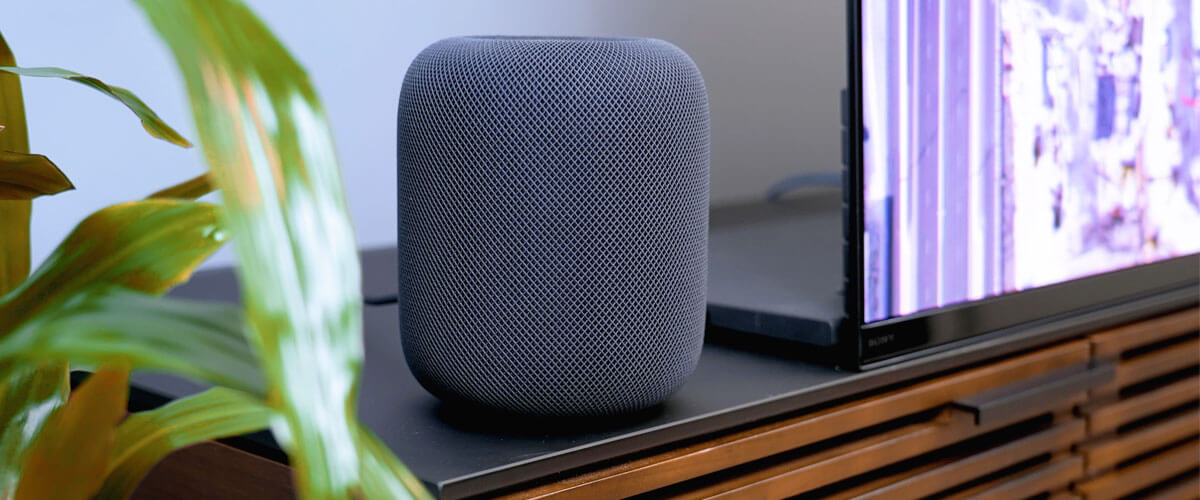
This procedure involves considering several factors, including the intended use of the speakers, the type of audio content being reproduced, and personal preferences.
Factors to consider when evaluating frequency response
Here are some key factors to consider:
- Flatness. A flat frequency response means that the speaker produces sound at an equal volume level for all frequencies within its stated range.
- Variation/tolerance. Most manufacturers provide a tolerance level, such as ±3 dB, which indicates how much the speaker’s output may deviate from the ideal response at different frequencies.
- Extremes. Assess whether the speaker adequately reproduces sound at both ends of the spectrum without distortion, roll-off, or significant frequency imbalances.
- .
- Crossover points. A well-designed crossover ensures smooth transitions between the drivers and maintains coherent sound reproduction across different frequency ranges.
- Listening environment. Keep in mind that the room might influence the speaker’s performance, and adjustments or room treatments may be required to achieve the desired response.
- Personal preference. It’s essential to consider your listening preferences and the type of audio content you’ll be primarily using the speakers for.
General guidelines for optimal frequency response values
The best way to determine the optimal frequency response for your specific needs is to audition and compare different speakers in person, considering your personal preferences and the type of audio content you frequently engage with.
FAQ
What are normal frequency response speakers?
In a general sense, “normal frequency response speakers” could refer to speakers that aim to reproduce sound in a balanced and accurate manner across the audible frequency range.
What is the ideal frequency response?
The ideal frequency response for speakers is subjective and depends on the listener’s preferences, the intended use, and the specific requirements of the audio content. It’s recommended to listen and compare different speakers in person to find the one that best aligns with your own preferences and listening needs.
Is lower frequency response better for speakers?
A lower frequency response is not inherently better or worse for speakers. The optimal frequency response for speakers depends on various factors, including personal preference, the intended use of the speakers, and the characteristics of the audio content being reproduced.

